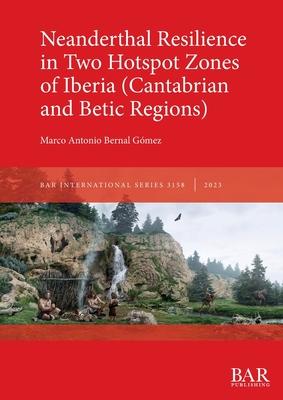Neanderthal Resilience in Two Hotspot Zones of Iberia (Cantabrian and Betic Regions) provides ground-breaking research on Neanderthal lithic technical and subsistence practices. It examines bioclimatic settlement behavioural patterns of two regions of the Iberian Peninsula during the late Pleistocene Period: the northern Cantabrian region and the southern Betic region. The principal aim is to test whether hominid groups of the same species (Homo neanderthalensis) behaved, exploited and occupied their territory in similar or different ways under varying environmental conditions. Three approaches were undertaken: a technological study of eight lithic assemblages, a construction of a database of faunal remains and an analysis of settlement patterns related to bioclimatic mapping. Results of these analyses suggest that Neanderthals in both regions reacted to changes in local ecology and climate in similar ways, highlighting their great adaptive ability and commonality in their behavioural responses.

Neanderthal Resilience in Two Hotspot Zones of Iberia (Cantabrian and Betic Regions)
Neanderthal Resilience in Two Hotspot Zones of Iberia (Cantabrian and Betic Regions) provides ground-breaking research on Neanderthal lithic technical and subsistence practices. It examines bioclimatic settlement behavioural patterns of two regions of the Iberian Peninsula during the late Pleistocene Period: the northern Cantabrian region and the southern Betic region. The principal aim is to test whether hominid groups of the same species (Homo neanderthalensis) behaved, exploited and occupied their territory in similar or different ways under varying environmental conditions. Three approaches were undertaken: a technological study of eight lithic assemblages, a construction of a database of faunal remains and an analysis of settlement patterns related to bioclimatic mapping. Results of these analyses suggest that Neanderthals in both regions reacted to changes in local ecology and climate in similar ways, highlighting their great adaptive ability and commonality in their behavioural responses.